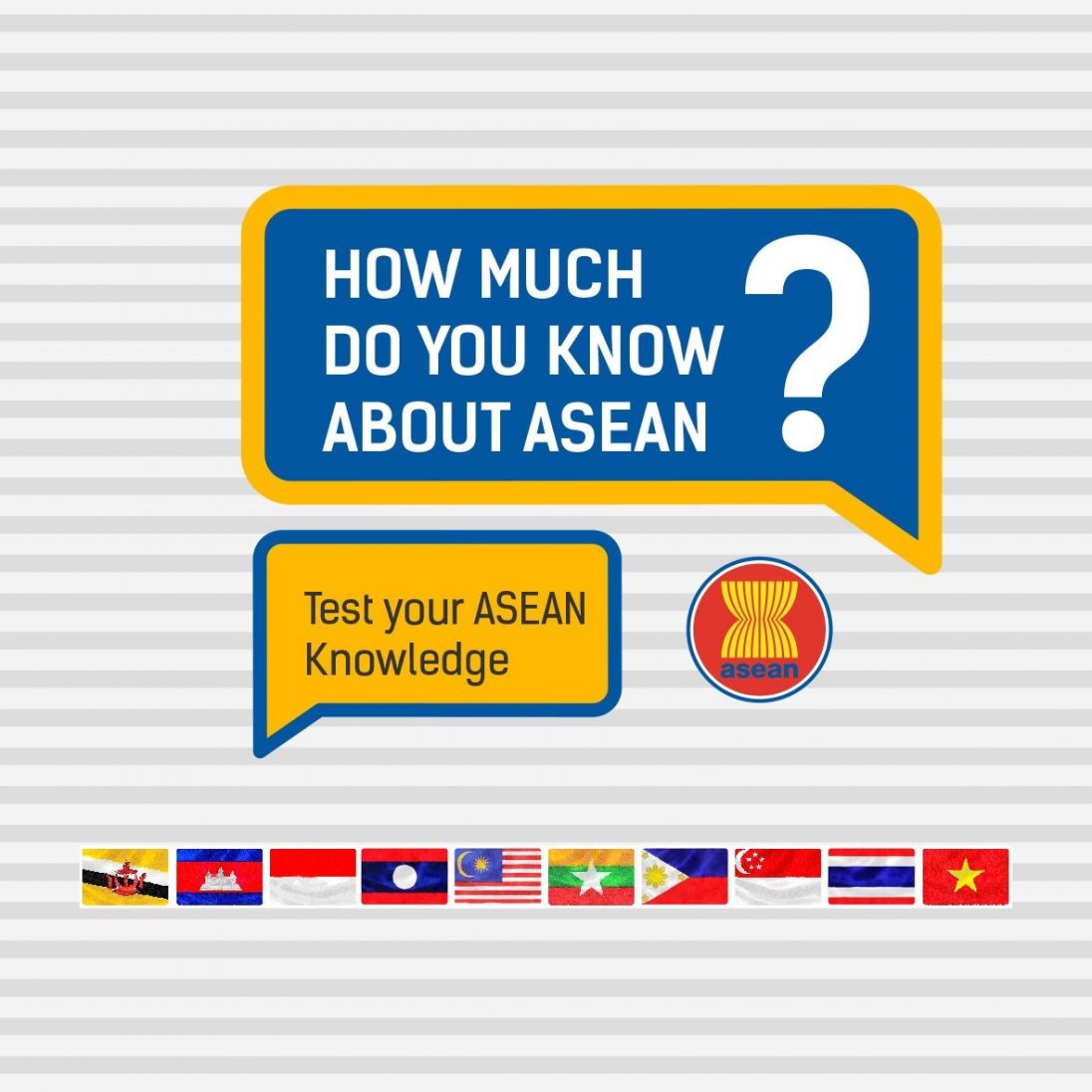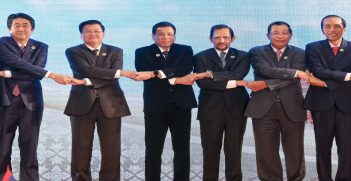The Disturbance and Endurance of Norms in ASEAN

As the ASEAN Summit is held in Singapore, the Association of Southeast Asian Nations is undergoing complex changes and yet remains remarkably stable.
Since the end of the Cold War, South-East Asia has been marked by a period of relative calm and stability. Although simmering tensions over the South China Sea have gripped the region, it has not devolved into large-scale conflict.
While there is no disputing that peace is maintained, this peace belies ongoing tensions, mistrust and stress within ASEAN, among its member states and with China.
How and in what way do tensions stress ASEAN norms and, consequently, ASEAN? What are some of the coping mechanisms adopted by ASEAN and its member states as the main recipients of assertiveness?
I argue that ASEAN is put under pressure, firstly, through extra-mural pressures that disrupt but do not yet break the fundamental norms of ASEAN and, secondly, though internal contestation over ASEAN norms that challenges the stability and meaning of these norms.
Norms and the ASEAN Way
The much vaunted and maligned ASEAN Way consists of the norms of consensus decision-making, informal diplomacy, noninterference and respect for sovereignty, and the insistence on ASEAN centrality. The ‘consensus decision-making’ norm refers to the decision-making process—consulting and agreeing only when everyone agrees. ‘Informal diplomacy’ is a reflection of the bloc’s eschewal of strict, formal and legally binding institutionalised diplomacy. Non-interference refers to a strict non-meddling policy over each other’s internal affairs and, closely related to this, ‘respect for sovereignty’ alludes to the primacy of individual sovereignty over notions of pooled sovereignty. With regards to ‘centrality’ is a desire, by ASEAN and its member states, to insist on ASEAN institutions being the central driving force in the regional architecture and on regional matters so as to keep its relevance.
Non-interference and respect for sovereignty
The norm of respect for sovereignty has been described as a “foundational stone” of the ASEAN Way. Yet contestation over the meaning, violation of the norm and, counter-intuitively, compliance with the norm have in various ways placed ASEAN under considerable strain.
Here, a useful example is the Philippines’ handling of the Rohingya humanitarian crisis. As ASEAN chair in 2017, Manila prevented the bloc from focusing on the crisis in any meaningful way and gave in to Naypyidaw’s demands that the term “Rohingya” not be brought up. This invited criticism of ASEAN’s toothless response and further impaired ASEAN’s standing in the region.
The violation of the non-intervention norm has more serious implications when it is brought on by external parties. One of the most egregious violations of this norm is the alleged interference in ASEAN by China in the 2012 ASEAN Foreign Ministers’ Meeting, resulting in the failure to issue a joint communiqué for the first time in its then 45-year history. While it is true that member countries interfere in each other’s internal affairs from time to time, it is quite a different matter for a member country to meddle under the auspices of another power.
Quiet informal diplomacy
The norms of informal private diplomacy have several benefits; chief amongst these is to allow leaders to discuss and negotiate sensitive matters away from the media spotlight. This, however, is increasingly being upended by the public airing of disagreements taking two forms: ASEAN leaders publicly chastising ASEAN and cautioning against the ills of doing or not doing something and, second, naming and shaming particular countries.
ASEAN leaders recognise how public scrutiny can be inimical to ASEAN’s cohesiveness and functions. Singapore’s foreign minister Vivian Balakrishnan said that he wishes that ASEAN leaders would spend “quiet time” with each other, without an audience, so that they can build mutual trust and understand each others’ deepest fears and aspirations. Similarly, Brunei as chair in 2013 noted how its small size would help it practise the “quiet diplomacy” that was “needed to repair the breach with China”. The contradiction and close balancing act between ASEAN credibility and the need for quiet, informal diplomacy is clear. ASEAN, as an institutionally weak organisation, has not figured out how to successfully balance both. Thus, in a bid to shore up ASEAN centrality, members have increasingly been violating the norm of quiet, informal diplomacy.
ASEAN centrality and consensus-seeking
One way in which China has brushed aside ASEAN in matters concerning ASEAN is through its more proactive and activist foreign policy agenda under Xi Jinping. In August 2017, the Myanmar army commenced “clearance operations” against the Rohingyas in Rakhine State in response to the killing of eight security officers by the Arakan Rohingya Salvation Army, an insurgent Rohingya group.
Beyond the human rights violations, this created one of the worst refugee crises ASEAN has seen in recent years. The response from ASEAN was tepid, comprising a half-page ASEAN Chairman’s Statement released on 24 September. On the same day, Malaysia, one of the strongest critics of the persecution of the Rohingyas, distanced itself from the statement. Indonesia, too, as another Muslim-majority country, deviated from ASEAN’s watered-down position.
The laborious way in which ASEAN dealt with the Rohingya crisis, in what should be a matter of central concern to ASEAN, is revealing. More often than not, countries are quite prepared to cede ASEAN centrality to preserve the norm of non-interference, but this has allowed extra-mural voices to intervene.
In this case, China has done this in two ways. First, it has refused to criticise Myanmar’s conduct over the Rohingyas. Second, it has allowed China to project itself as a ‘mediator’ and ‘problem solver’ in South-East Asia, coming up with an offer to solve the problem. But China’s proposal and courtship of Myanmar has a negative effect on ASEAN’s norms because although the intervention was light on details, its presence is amplified by the inaction of ASEAN. By not wanting to step on Myanmar toes and thus violate the norm of non-interference, ASEAN has allowed major powers to step in and take a leading role.
While ASEAN norms are constantly subject to contestation and reinterpretation, it is never done in a manner that entirely changes the meaning of the norm itself. It is also clear here that when norms are challenged from the outside, it tends to be more destabilising than when they are undermined from within. Extra-mural powers, however, can be agonistic about ASEAN’s fate in a bid to advance their own national interests. To that end, efforts by some member states and ASEAN to boost ASEAN functionally and normatively are a laudable response; however, the extent to which they may prove effective or not over the longer term is a matter for further investigation.
Dylan M. H. Loh is a PhD candidate in the Department of Politics and International Studies at the University of Cambridge and a faculty member of the Public Policy and Global Affairs Division at Nanyang Technological University, Singapore. He tweets as @dylanloh.
This piece is an edited extract from his article in Volume 72, Issue 5 of the Australian Journal of International Affairs titled ‘The disturbance and endurance of norms in ASEAN: peaceful but stressful‘. It is republished with permission.





